
© Wonders of World Aviation 2015-


Part 6
Part 6 of Wonders of World Aviation was published on Tuesday 12th April 1938, price 7d.
This part included a central photogravure supplement showing the Fleet Air Arm. This section illustrates the article on The Fleet Air Arm.
The Cover
The cover this week, the original of which comes from Flight, shows a production Fairey Battle during its acceptance tests.
An article on The Work of the Test Pilot appears in Part 4, with a similar photograph in black and white.
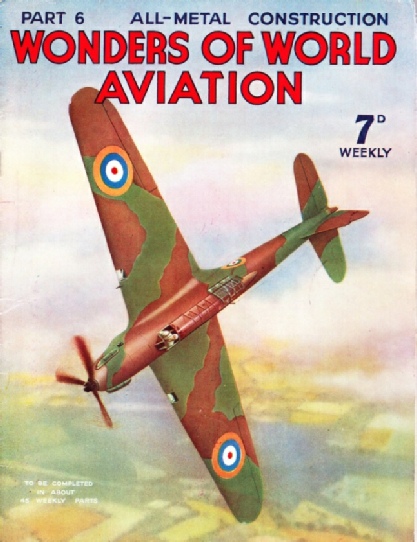
Contents of Part 6
The First to Australia (Part 2)
The story of the first flight to Australia. The chapter is concluded from part 5.
This is the fourth article in the series Great Flights.
Air Routes Across America
One of the major triumphs of civil aviation is the spanning of the United States by air from Atlantic to Pacific. The United States of America, vast as they are, offer a fascinating panorama of air transport work. Only recently one commercial line offered “two tickets for the price of one” provided the spare tickets was used by the traveller’s wife.
This chapter is the first in the series Air Routes of the World.
The interest in naval flying is very great, an interest that began so many years ago when what was then known as the Royal Naval Air Service was established. The RNAS was incorporated with the Royal Flying Corps on April 1, 1918, the two branches thereafter being known as the Royal Air Force.
The Fleet Air Arm Photogravure Supplement - 2
A TAKE-OFF FROM THE DECK OF HMS COURAGEOUS, which was converted to an aircraft carrier in 1928. The machine is a Blackburn Shark torpedo-bomber-reconnaissance biplane. During take-offs and landings, an aircraft carrier steers directly into wind to keep as low as possible the speed of the aircraft in relation to the deck. The jet of steam, by which the ship’s navigator keeps a check on the wind direction, is visible below the machine in the picture.
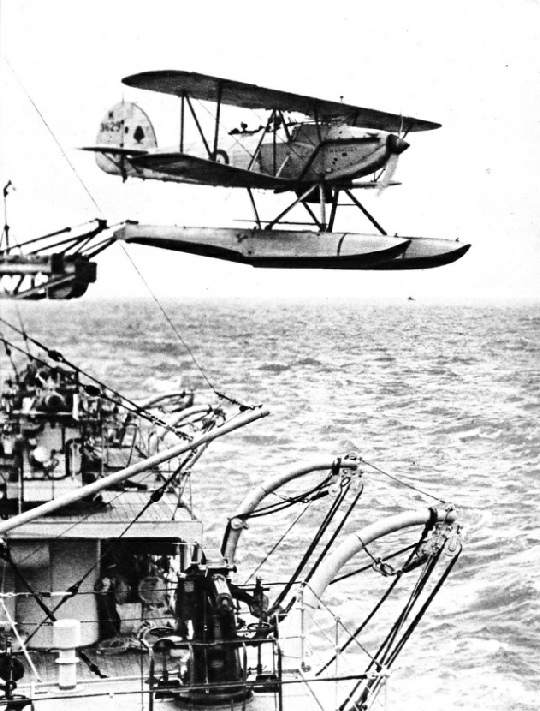
The Fleet Air Arm
Photogravure Supplement
A HAWKER SEAPLANE LEAVING THE CATAPULT of HMS Sussex. The aircraft is attached to a carriage on the catapult, and the engine is run up to full speed. At a signal from the pilot the carriage is shot along its runway of seventy to ninety feet by a charge of cordite. When the carriage reaches the end of the runway, it releases the aircraft, which shoots off into the air at flying speed.
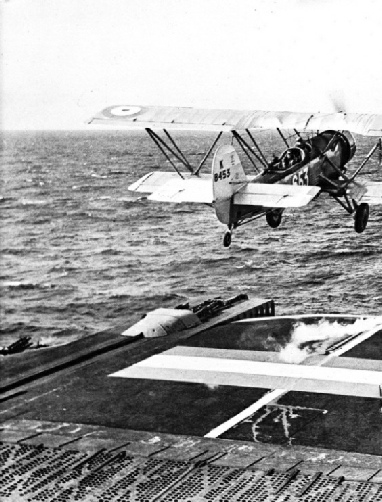
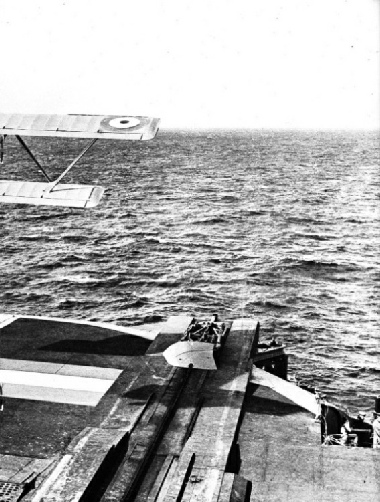
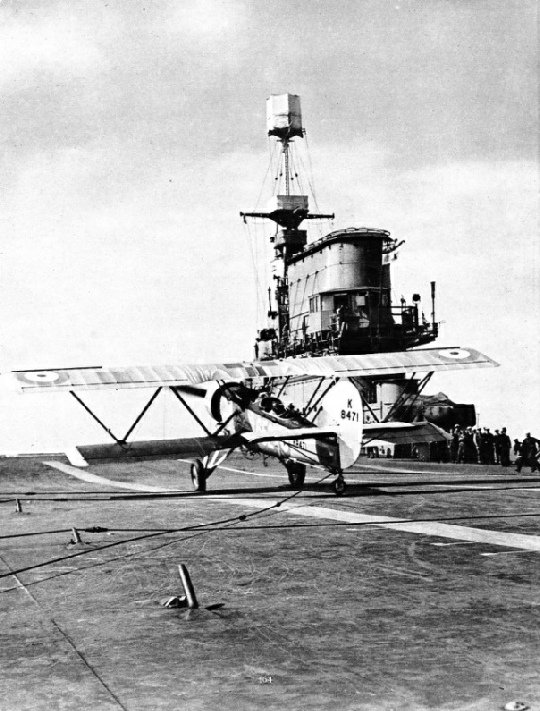
Fleet Air Arm
Photogravure Supplement - 3
CABLES PULL UP THE AIRCRAFT after it has landed on the deck of an aircraft carrier. A steel pick-up hook, underneath the fuselage of the aircraft, picks up one of the transverse cables as the machine comes in to land. The cables are attached to hydraulic control mechanisms below the deck. The height of the cables, when set for landing purposes, is fifteen inches; by means of the hinged posts carrying the cables, they are laid flat on the deck for take off.
How light members are assembled to produce strong airframes. The advantages of metal are presented lucidly in this chapter without prejudice or bias, for wood has its place and, in certain circumstances, may be more desirable than metal. It was natural that wood should be chosen in the early days of experiment, for it was more easily handled and appeared to be the lightest material available for its strength; there was then no question of mass production at speed.